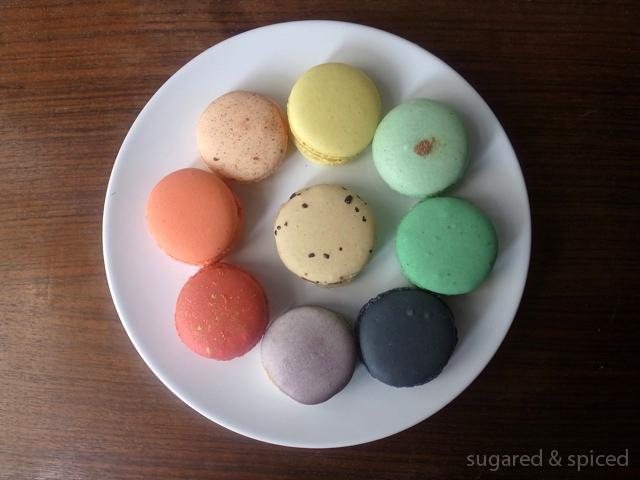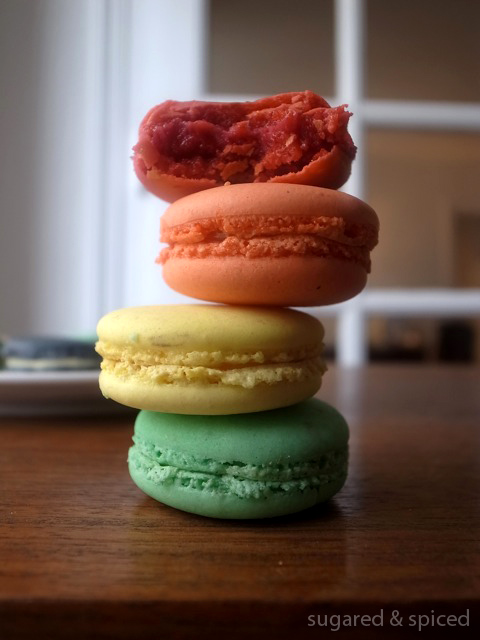We took a break from entremets to learn something all of us had been looking forward to for a long time – macarons. The recipes we used are apparently from Pierre Hermé, who has previously taught some classes at Ferrandi. There were a dozen flavors to choose from, and I set my heart on olive oil.
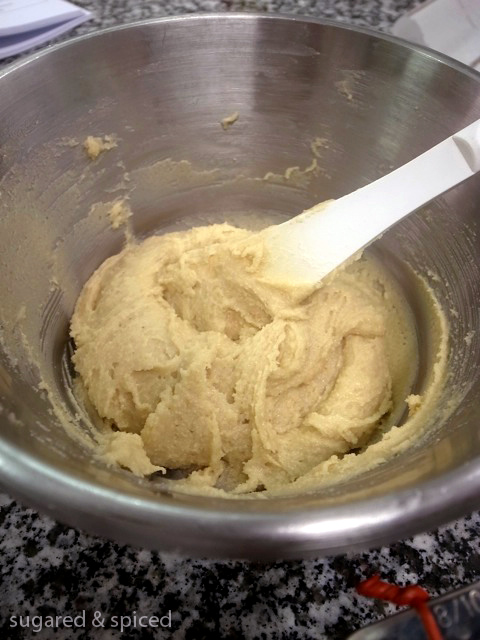
The first step is to make the macaron batter. Part one is a mixture of almond powder, icing sugar, and egg whites, which is quite tough to stir because the batter is very stiff, but it’s important to whisk until the mixture becomes homogenous. Do not forget to sift the almond powder and icing sugar before mixing, otherwise the result will not be as smooth. Part two is an Italian meringue, which is done by pouring cooked sugar (117°C) to whipped egg whites. Continue to whip the egg whites until it cools to about 50°C, and add food coloring to the meringue if desired.
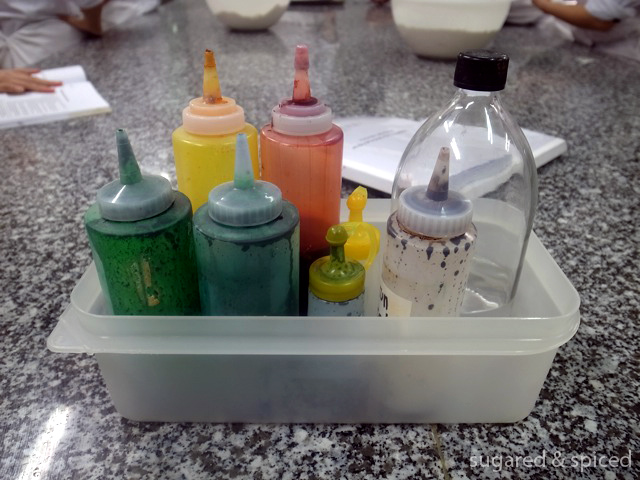
Combine part 1 and part 2 delicately, and beat the mixture with a wooden spatula to remove some air from the batter. The result should be slightly liquidy, but not so liquidy that it spreads out too thinly when piped on the baking sheet. It’s a little hard to explain the exact texture – to perfectly judge if a batter is ready, you just need to do this a few times to accumulate experience. To pipe the macarons, we used these boards with pre-drawn circles to make sure that the sizes are correct – this is unnecessary course for those who already can pipe very regularly.
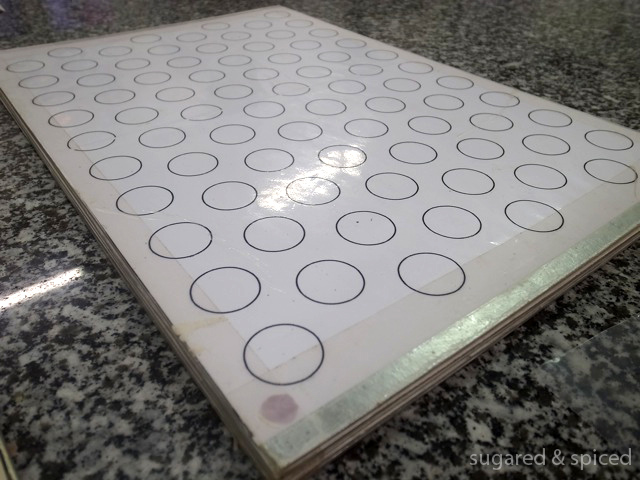
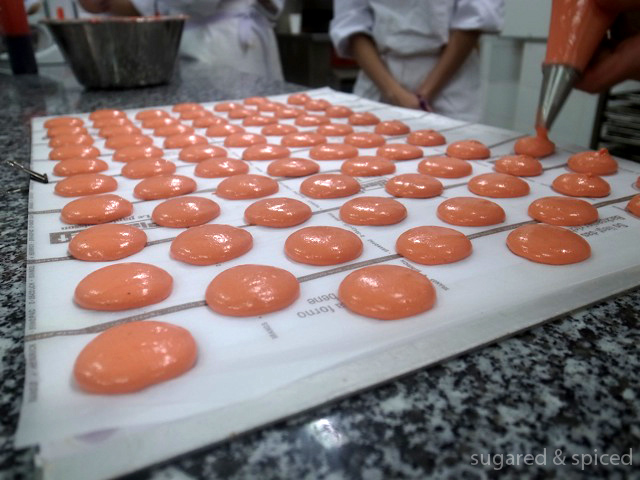
It is important to leave piped macarons in open air to dry out a little bit before baking. This allows a dry layer to form at the surface of the macaron, which prevents the cookies from rupturing during baking, and also results in pretty macaron “feet”.
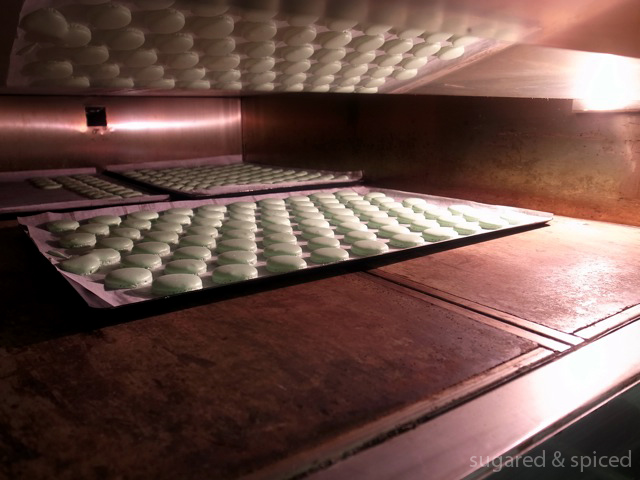
The bottom layer of wrinkles are the much sought-after macaron “feet”.
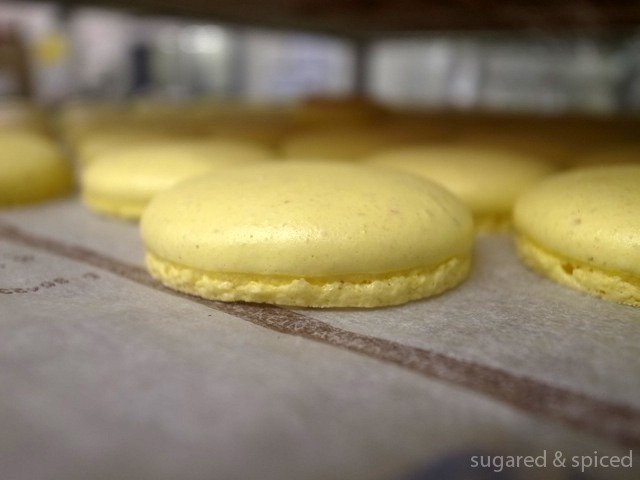
Ruptured macarons can be caused by a number of factors – not enough resting time and baking at too high of a temperature are two common causes. It is quite normal for a batch of macarons to have a few failed ones – this happens even in professional kitchens, and no one can really explain exactly why.
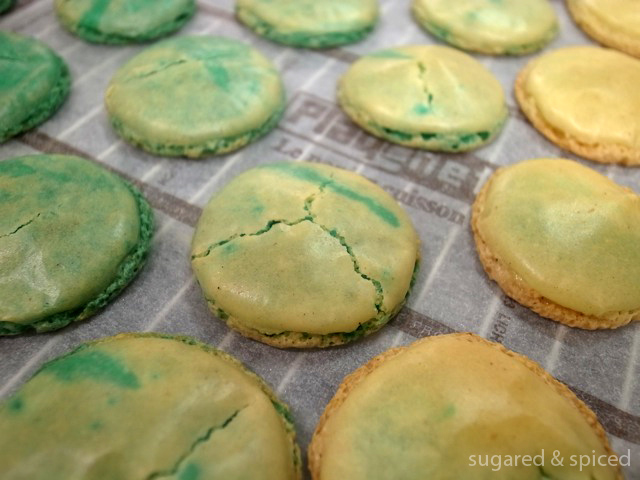
Sort out the better-looking macaron cookies and matching them up in size.
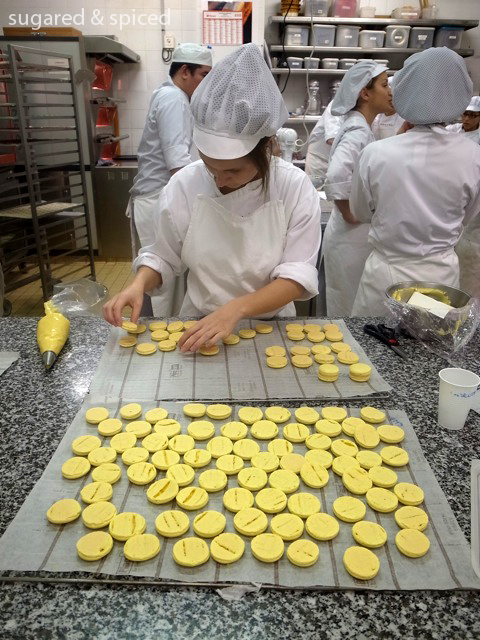
Garnish with cream and other desired fillings (e.g. jam or fruits), and press down slightly with another cookie.
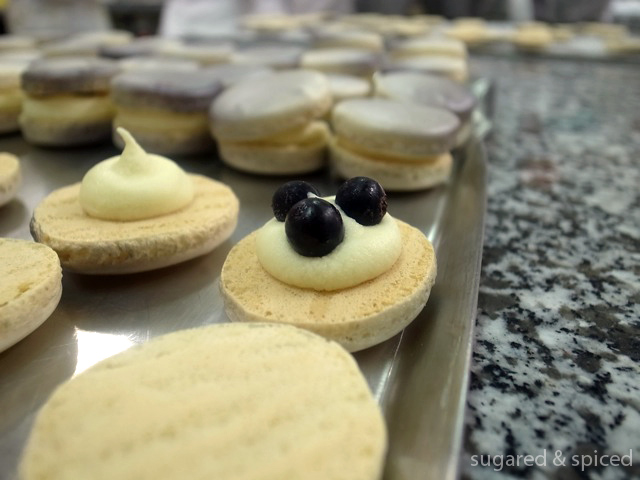
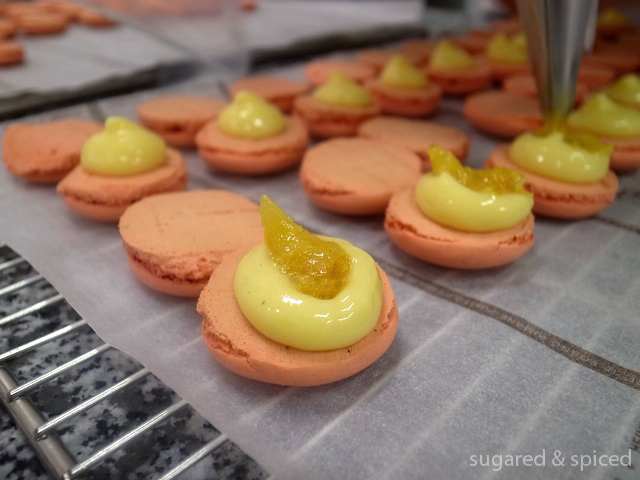
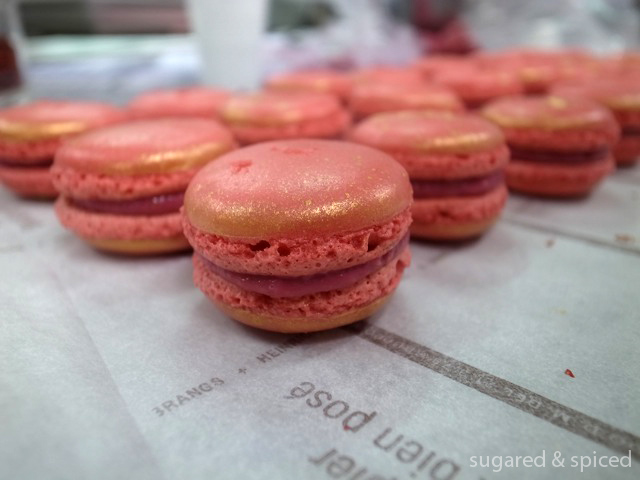
Macaron sweatshop!
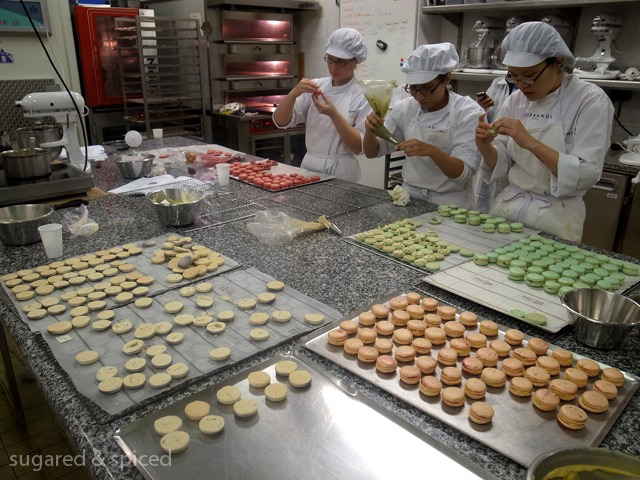
Our results. Not too bad, but lots of room for improvements, obviously :)
